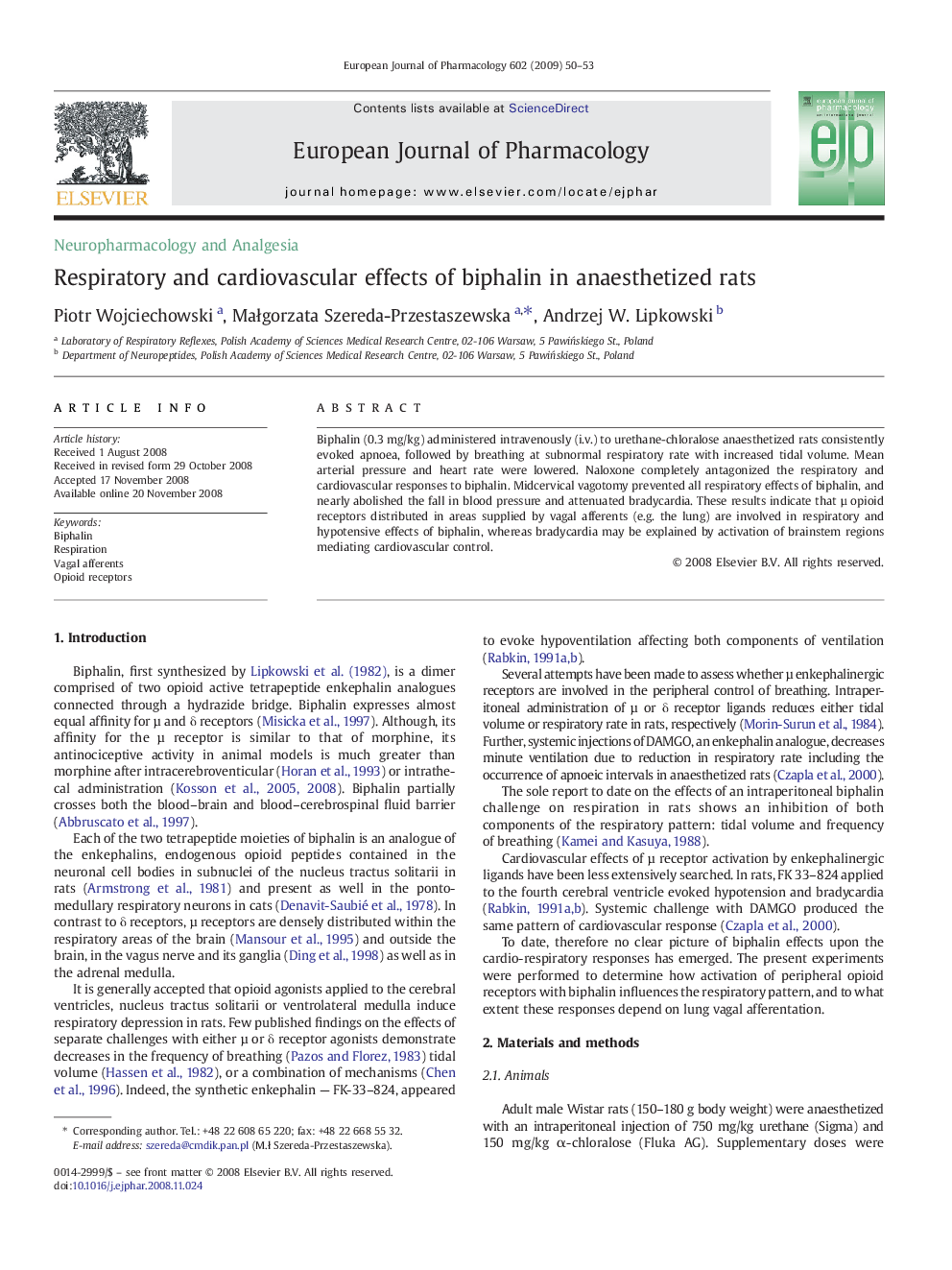| Article ID | Journal | Published Year | Pages | File Type |
|---|---|---|---|---|
| 2534600 | European Journal of Pharmacology | 2009 | 4 Pages |
Biphalin (0.3 mg/kg) administered intravenously (i.v.) to urethane-chloralose anaesthetized rats consistently evoked apnoea, followed by breathing at subnormal respiratory rate with increased tidal volume. Mean arterial pressure and heart rate were lowered. Naloxone completely antagonized the respiratory and cardiovascular responses to biphalin. Midcervical vagotomy prevented all respiratory effects of biphalin, and nearly abolished the fall in blood pressure and attenuated bradycardia. These results indicate that µ opioid receptors distributed in areas supplied by vagal afferents (e.g. the lung) are involved in respiratory and hypotensive effects of biphalin, whereas bradycardia may be explained by activation of brainstem regions mediating cardiovascular control.
